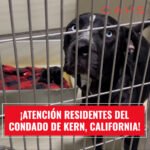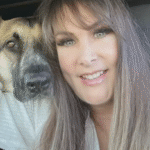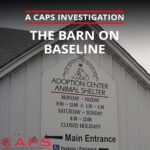Property Owner: Virgil Vesterberg
Farm Name: 3V Farms aka Vesterberg Farm
Address: lat/long coordinates 39.217169, -97.455253, at the southwest corner of N 260th Rd, and Rifle Rd
City, State, Zip: Miltonvale, KS 67466
Date and time of CAPS Investigation: 05/24/21, 1633; 05/29/21, 1048
Weather at time of investigation: 71°F and partly cloudy; 54°F and partly cloudy
Approximate number of live animals observed at time of investigation: 40 sheep, 20 goats, three rabbits
5/24/21 Initial documentation
On 5/24/21 at 1430, I went to Virgil Vesterberg’s residence at 1928 N 240th Rd, Miltonvale, KS 67466, and a Caucasian male, about 70 years old, 5’9″, 200 lbs., with short white hair, allowed me access to his property at lat/long coordinates 39.217169, -97.455253, at the southwest corner of N 260th Rd, and Rifle Rd. The man identified himself as Virgil, the owner of the property I wanted to access.
At 1633, I noted that on the west end of the property near Rifle Rd, there were livestock in enclosures and also roaming outside of the enclosure. About 30 sheep were in the largest pen, which was about 80’ wide and long. Adjacent to the largest pen were two additional pens that were about 20-30’ wide. One pen held about three sheep, and another held about two goats. About a dozen of the sheep were clearly emaciated, with their hips and leg bones being very evident. Two had hooves that were a foot long and curled upward. These sheep stumbled as they walked and one chewed at her front left hoof. A dead goat was in one pen, the animal’s head in an empty feed trough. No food was available for the penned animals, and their water buckets and troughs had either a couple inches of dark brown water or mud in them.
About half of the sheep had their fur falling out in various places, indicative of a skin condition that has gone untreated. Bones and pieces of animal hides were scattered throughout the pens, as well as outside of them, appearing to be from dozens of animals. There were several bodies in stages of various decomposition in the pens, appearing to be a day to a month old. Six plastic hutches, commonly used for raising calves, were just southwest of the pens, and about six more were to the west across from a dirt driveway. The hutches had what appeared to be several inches of old manure piled in them. One had at least four bodies of sheep that were heavily decomposed, another had a heavily decomposed sheep and a dead lamb that appeared to have died about a day ago, and another had numerous bones in it from one or more animals. Several of the hutches were in wire pens with empty feed troughs and water buckets, or no food and water dishes made available at all; decaying bodies or bones were piled inside the hutches. This indicates animals were put inside, given no food or water, and left to starve to death.
Across the driveway from the pens, near several of the dirty hutches, were elevated wire rabbit cages. The hutches had two rows, with the bottom being about four feet wide and long and two feet tall, and the ones above them being cages that were about two feet wide and long and a foot tall. One top cage and two bottom cages were occupied with a single white rabbit each, and the others were empty. All enclosures, however, had about four inches of manure piled in them. Food dishes contained manure, and water dishes contained a couple inches of dark water. The rabbit in the top cage had a left eye surrounded by a yellowish liquid, and the eye was shut while the right eye was open.
The cages were just south of a wooden house with no activity evident from inside. The driveway was heavily overgrown, and a car was nearby with tall grass surrounding it on all sides. South of the hutches was a wooden shed. I could hear bird cooing from the south side of the shed that appeared to be open on its southern side; doors accessing the building were closed.
The conditions of the animals and the decomposing bodies, combined with the lack of feed and water for the animals, indicates Vesterberg knowingly failed to provide food, potable water, and care as is needed for the health and well-being of the animals in violation of K.S.A. §21-6412 (a)(3).
5/29/21 Follow-up documentation with sheriff’s deputy and veterinarian
On 5/29/21, Debbie Miller, the CAPS Kansas director, and I went to meet Deputy VanCoevern at the Ottawa County Sheriff’s Department at about 1000. From there we followed him to Sunflower Veterinary Service at 607 E 10th St, Minneapolis, KS 67467, where we met David Keith Wallace, DVM. When I introduced myself as an investigator for CAPS, Wallace refused to shake my hand and told me that he would only interact with VanCoevern. We the followed them to Vesterberg’s property containing the animals noted on 5/24/21.
Conditions largely remained persistent on the property, including emaciated animals and animals with heavy fur loss, though the dead goat in an empty feeder was gone. There was water in some, but not all water buckets. Old brown hay, which VanCoevern said was frozen in the winter, was scattered about pens. There were more goats than I noticed on 5/24/21, with some in the woods to the west of the pens, and others with sheep in the largest pen I didn’t previously see, indicating they were with the loose herd or elsewhere on the property and then had entered the pen. As we observed them, about 20 animals in the pen jumped a leaning portion of the fence and ran off elsewhere on the property.
The sheep with overgrown hooves remained in the same condition. At one point, we saw the animal try to lie down, and as she tried to get her final front hoof under her, she leapt up suddenly and stumbled forward before stopping. The sudden action, faster than her others, showed that trying to lie down had caused her pain. We noticed another sheep with a right front hoof about eight inches long and four inches wide, which she mostly kept up in the air as she hobbled in an attempt to walk. She had a bright red bloody prolapse about four inches long, as well. A black and white sheep had a front left leg that appeared to be swollen near the hoof, and she kept the hoof lifted in the air as she limped.
Other dead sheep and goat bodies remained whereI had seen them on 5/24/21. I noticed a circular metal feeder with the bodies of two heavily decomposed sheep in it and a heavily decomposed sheep next to it, which I did not document on 5/24/21. Also, I saw a heavily decomposed sheep between a water bucket and metal shelter. The wool was still in place over the bones, but the skin on the face was gone, revealing the skull. The rabbits had pellet feed in their dishes and some water, but their conditions otherwise remained unchanged. The rabbit with the eye infection remained in the same condition.
The conditions of animals at the proprety still appeared to be violations of K.S.A. §21-6412 (a)(3).
Deputy VanCoevern told us that Vesterberg had been instructed to clean up the area and provide food and water for the animals, but that his actions over the last few days were clearly insufficient. We let VanCoevern and Doctor Wallace at the proprety to continue without our prescence affecting Wallace’s veterinary assessment. Shortly thereafter, VanCoevern called to tell us that Wallace agreed the animals were in a state of neglect, which should prompt cruelty charges for Vesterberg. He added that Wallace decided to visit other properties Vesterberg had containing cattle, but that they so no signs of neglect at those properties.
USDA gave Virgil Vesterberg more than $468,000 in subsidies between 1995 and 2020, including $38,003 for livestock.
https://farm.ewg.org/persondetail.php?custnumber=A08178305
USDA gave Kevin Vesterberg more than $158,000 in subsidies between 1995 and 2020, including $23,186 for livestock.
https://farm.ewg.org/persondetail.php?custnumber=A08260009
The Small Business Administration gave Virgil Vesterberg two PPP loans totaling $33,424 in the first half of 2021 and gave Kevin Vesterberg two PPP loans totaling $41,666 during the same period.




